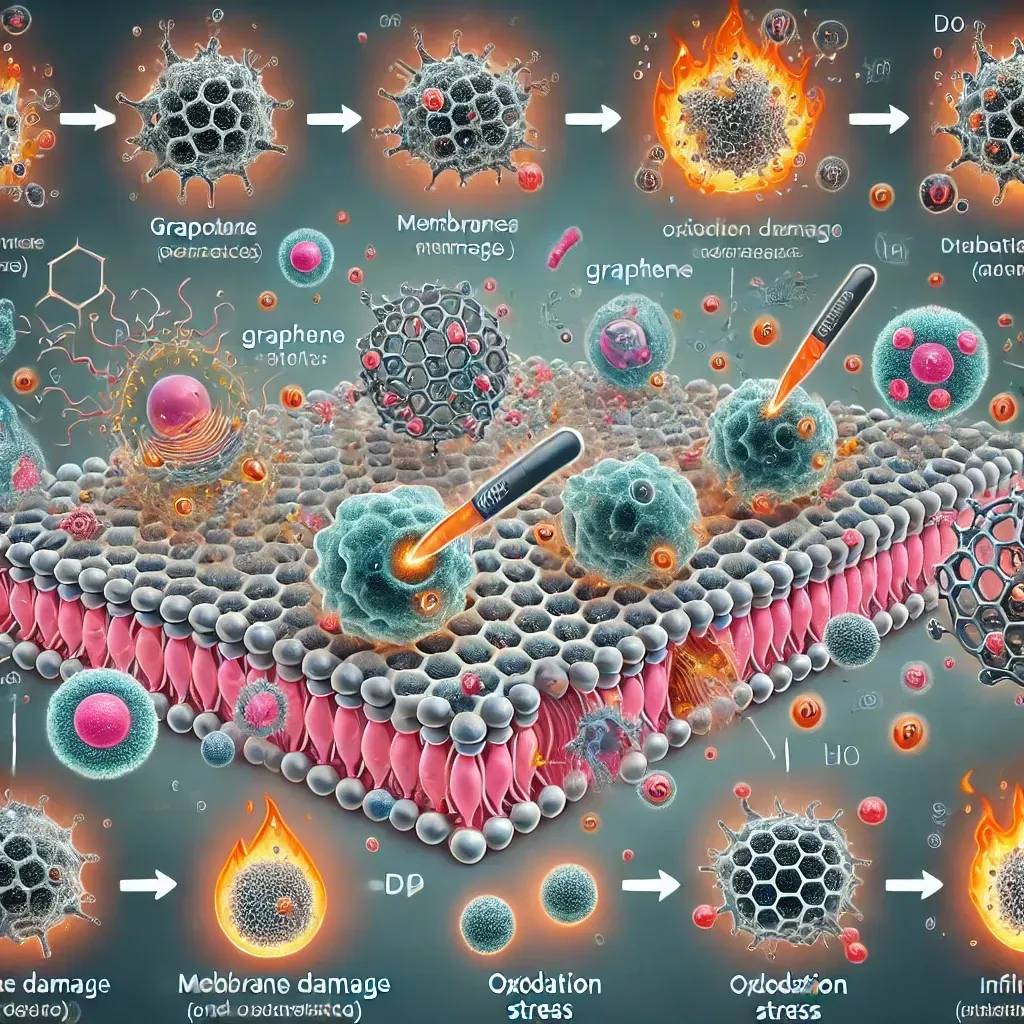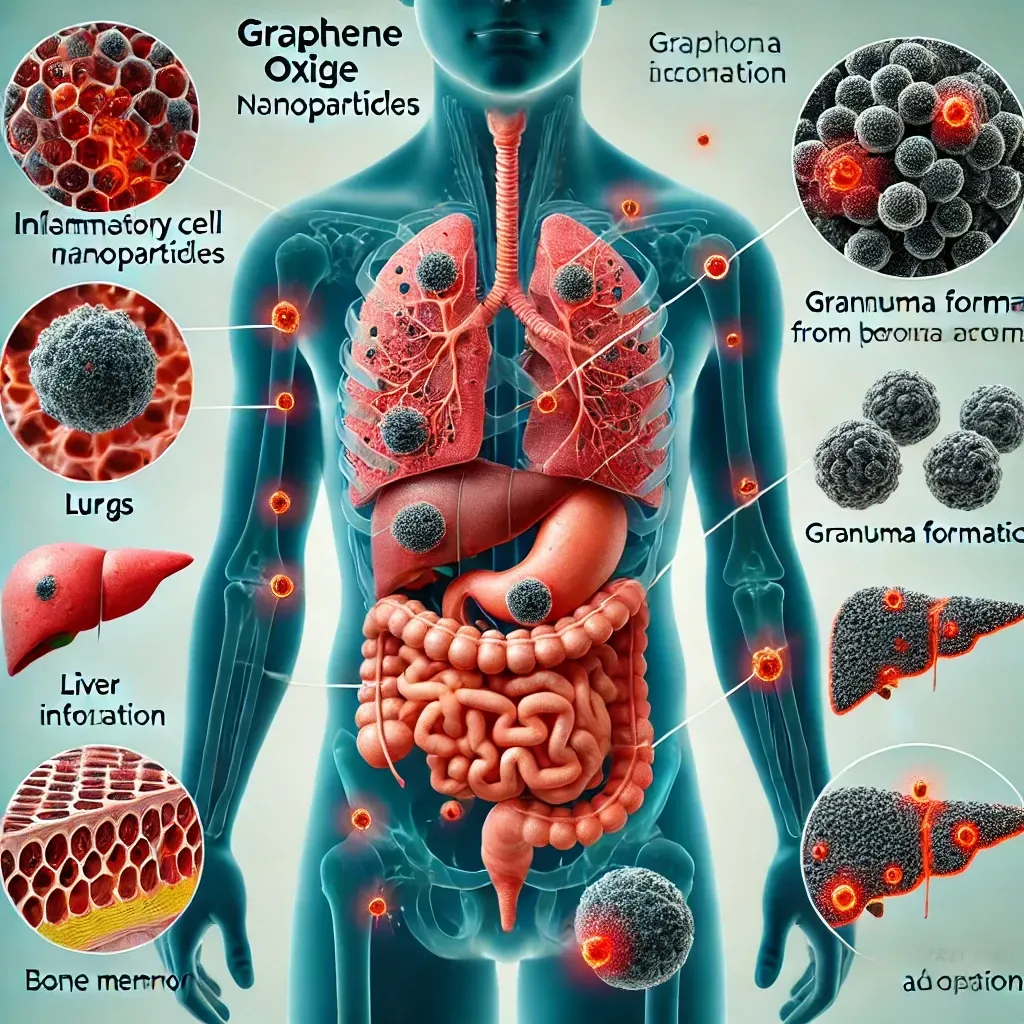Potential Risks of Graphene: What Studies Say About Graphene Oxide (GO) Nanoparticles
Various studies suggest that graphene-based materials may pose health risks, especially when present in the form of nanoparticles such as graphene oxide (GO). Although research is still in its early stages and results often vary based on particle size, administration method, and chemical properties, some dangers have already been identified.

1. Cellular Toxicity and Inflammation:
Graphene and its derivatives have been observed to have cytotoxic effects in various types of cells.
These materials can penetrate cells, causing damage to cellular membranes and oxidative stress, which can lead to inflammation.
This has been demonstrated in various organisms, from bacteria to humans.
However, the extent of toxicity varies depending on the specific characteristics of graphene particles and the experimental context.

2. Organ Accumulation:
Studies conducted on animals have shown that, after the injection of graphene oxide, these nanoparticles tend to accumulate in organs such as the lungs, liver, spleen, and bone marrow.
Observed effects include inflammatory cell infiltration, granuloma formation, and pulmonary edema.
However, oral exposure appears to result in lower absorption within the gastrointestinal tract.


3. Biological Barriers:
Graphene has been observed to cross critical body barriers such as the blood-brain barrier, which could potentially expose the brain to neurotoxic damage.
Similarly, there is a possibility that graphene could pass through the placental barrier, potentially affecting fetal development.
However, research in this area is still limited, and no definitive conclusions have been reached.
While graphene's applications hold great promise across various technological fields, it is clear that there is an urgent need for further studies to better understand its potential long-term effects on human health.